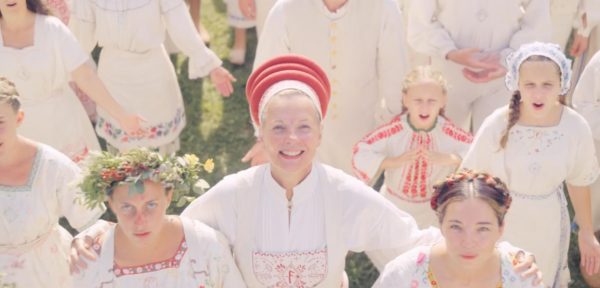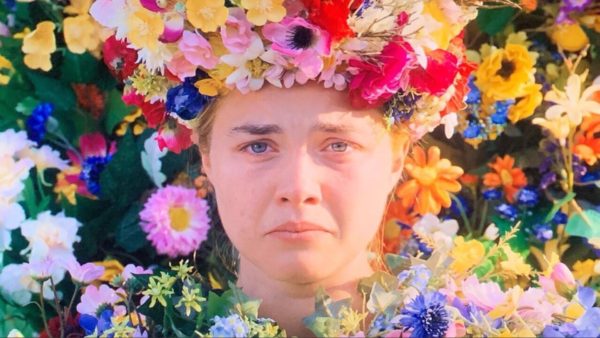Opinion: It’s always sunny in horrorland
What makes something scary? Is it the context? The lighting? The killer-clown jumpscares?
Recently, I went to see a horror movie. I was stiff, jittery and before the movie even began, I yelped during one of the trailers. The movie itself, while scary in its own right, did not terrify me as much as I terrified myself preparing for it.
The buildup of suspense is what petrifies all of us, torturing us before we’ve actually endured the torturing. It takes courage to enter a haunted house, or text first after a first date (gasp!). But when it’s done and over with, we almost laugh at how easy it turned out to be.
Surely, stressful situations in our daily lives— riding in a car with a bad driver, or walking home alone at night — can be real events that shake us to our cores because, deep down, we know what might happen. Even if it’s the smallest possibility, we all know there’s a chance those real-life horror-stories could happen to us.
People are afraid of dying, humiliation, pain and losing loved ones. Those fears are kept away in the dark, so it’s only logical that people are afraid of the dark.
That is why so many scary movies take place at night, or inside dark buildings, in order to eliminate the symbol of hope: daylight. But what happens when you meet your worst nightmare in the sun?
In 2019, director and screenplay writer Ari Aster, the creator of Hereditary, came out with his psychological-horror, Midsommar. This film takes the audience out of the darkness and into the light of day for some of the most terrifying scenes in modern horror.
The story captures graduate students on a trip to a vacation in Sweden. The seemingly eternal sunshine begins to give the audience an ere of impending doom, as the sun never seems to set and the most gruesome events take place in clear day.

Gunnel Fred in Midsommar (2019)
While Midsommar is not the first movie to force it’s audience out of their “well-lit” comfort zone, it goes so far as to portray a simple dance competition, flower picking, and outdoor feasts as suspense-driven elements. Other films, including Jeepers Creepers, The Texas Chainsaw Massacre, Friday the 13th: Part 3, The Wicker Man, and Insomnia, also reserve their iconic terror for the idyllic sunshine that audience members would normally crave as a haven from the fear.
It reminds us that evil can strike at any time — even in the safety of our own homes, in broad daylight.
In order to scare someone, we hide in the shadows. We surprise them. Try to make them jump. Humans have always been afraid of the dark; afraid of the unknown. The only thing we’re more afraid of, is what is known. We know what is right in front of us. We know what people are capable of, what accidents we may run into in the middle of the day.
In a 2019 BBC article written by David Opie, he stated, “Given how much potential there is to find fear in the sunshine, it’s surprising that more scary films haven’t pushed back the shadows to exploit daylight horror in this way. Perhaps the reason is that it simply makes the terror feel too real.”

Florence Pugh in Midsommar (2019)
Opie describes Midsommar as tackling the sunny-horror trope at its core by enforcing the issues that warm seasons often cause in psychological disorders. While people are made aware of seasonal depression disorder induced in the cold and dark months, people disregard the mania-inducing effects of the constant sunlight of summer and spring.
Fear is created by suspense; the build up and expectations that come with horror are expected, thrilling even. But sometimes what we’re expecting, whether it comes from a cemetery or a daisy field, can create dread within us. Scary context trumps scary settings because nowhere is safe; you could be singing in the rain, or being chased by a serial killer in a hurricane. Our actions, thoughts, and intentions define a place and give meaning to it.
Isn’t it more eerie to find a random blood splatter in a perfectly neat dining room, than a creaking, rustic, abandoned wood mill? We expect danger in the dark of night, where we can’t see. We’re prepared. But the danger of a cozy beach, a child’s birthday party, or a simple festival full of music and laughter can hide the darkest manifestations we refuse to give any attention to. It’s the only way we can remain sane, convincing ourselves we’re safe.
The inevitability associated with the day is even more terrifying than the dark. Light no longer represents hope and safety, but reality — the scariest thing of all.

Megan Cowdell is a freshman opinion columnist studying for a bachelor’s in Communications. She loves music, reading and wants to write books for a living.
megan.cowdell@usu.edu

